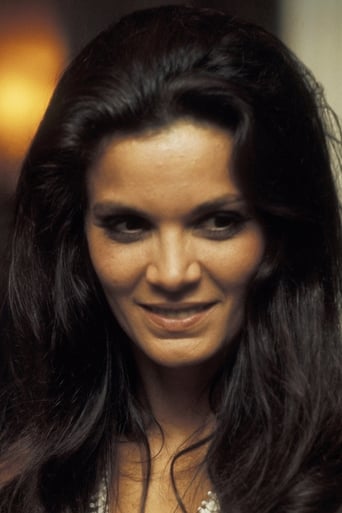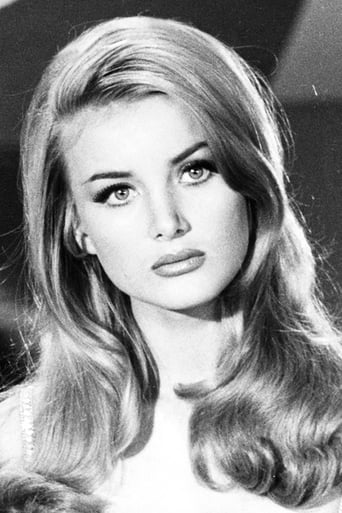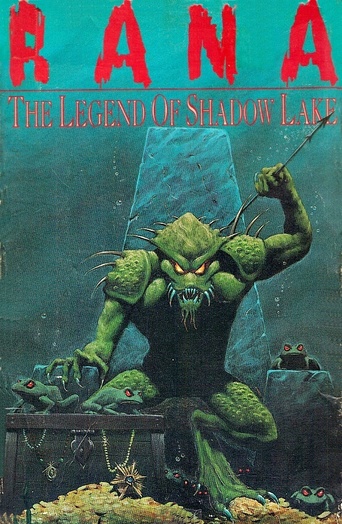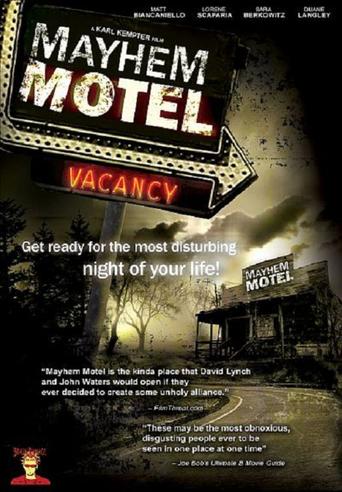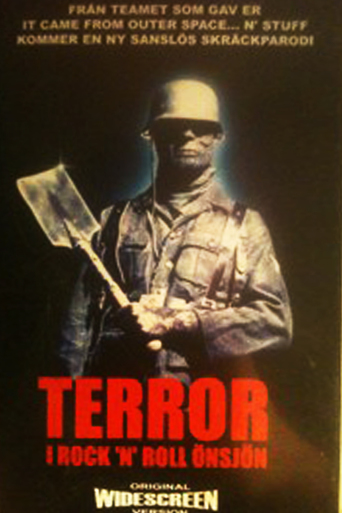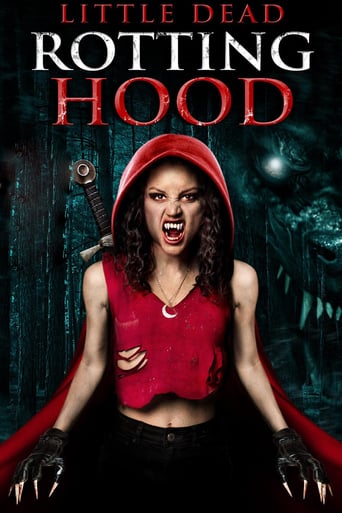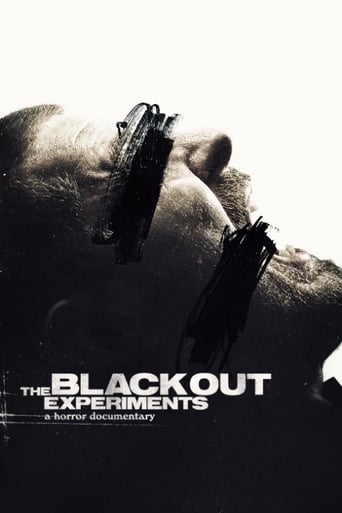Don't Torture a Duckling (1972)
A reporter and a promiscuous young woman try to solve a series of child killings in a remote southern Italian town rife with superstition and a distrust of outsiders.
Watch Trailer
Cast
Similar titles

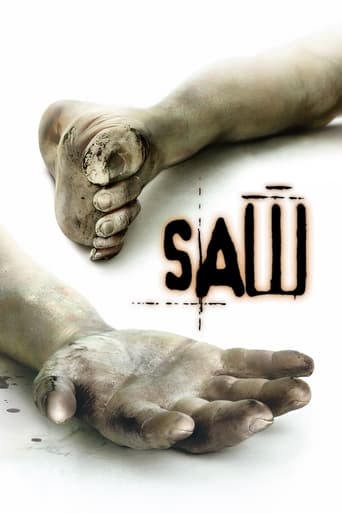

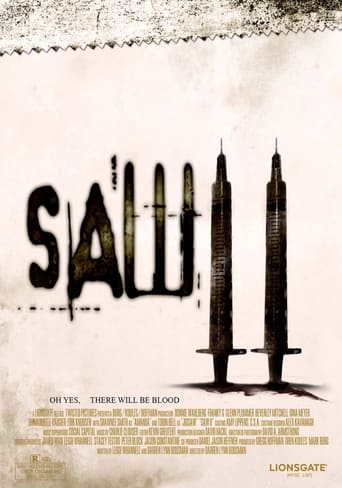
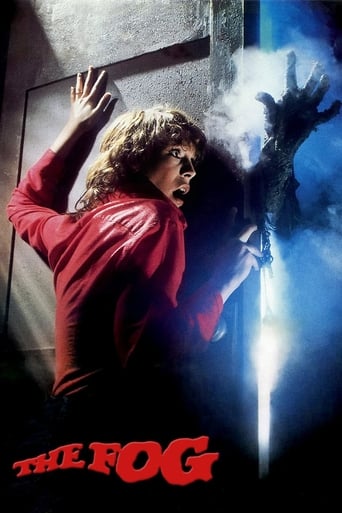
Reviews
Fresh and Exciting
The movie's only flaw is also a virtue: It's jammed with characters, stories, warmth and laughs.
Strong acting helps the film overcome an uncertain premise and create characters that hold our attention absolutely.
Blistering performances.
The film was controversial for its day, due to criticizing the Catholic Church, which led to a limited run in Europe and the film being unreleased in the US until 2000.In the south of Italy, more specifically the small village of Accendura, Bruno, Michele, and Tonino are engaged in mischief and other activities. They do all the things you expect little Italian boys to do — smoke cigarettes, watch prostitutes have sex, abuse a pepping tom — earning the ire of La Magiara (Florinda Bolkan, also the star of Fulci's giallo Lizard in a Woman's Skin), a witch who digs up the bones of an infant before conducting a ritual where she creates voodoo style dolls of the three boys, stabbing them with needles and chanting over them.Bruno is the first to go missing, inciting a media frenzy as reporters from all over Italy find the story of the week. Andrea Martelli (Dennis Hopper's The Last Movie, Fulci's Four of the Apocalpyse) is one of them, but smarter than the rest. Sneaking in to the police investigation, he wonders aloud why the kidnappers, who have called in a ransom, have asked for a small ransom. The peeping tom is arrested once it comes out that he buried the boy's body — but he claims that he only did so to try and get the ransom. While he being held for questioning, the second boy, Tonino, is found dead, proving the innocence of the pervert.Meanwhile, the final boy, Michele, meets rich girl gone bad Patrizia, (Barbara Bouchet from The Red Queen Kills Seven Times) who sunbathes in the nude and has no problem letting the young kid watch. Someone calls Michele during a rain storm the next evening and he becomes the third victim.This gives the reporter the chance to meet and get close to Patrizia. Turns out she's hiding out in her rich father's modern house after a drug scandal — MARIJUANA!!! — and the villages have already condemned her as a slut due to how she dresses. The reporter also meets the young village priest, Don Alberto Avallone, who lives with his strange mother and deaf, dumb and mentally deficient little sister.Don Alberto is deeply affected by the boys' deaths, as they were all pupils at his school and he attempted to keep them off the streets and playing soccer. He's so well connected — both in town and with the Catholic Church — that he censors even the magazines on the newsstand. He remarks that he wishes that he could censored Patrizia.One of the things you'll notice about giallo is that the more you watch them, the more you realize that they just introduce you to character after character after character, unlike the traditional British or American detective story where everything happens for a reason.That means it's time to meet someone new — Francesco, an old man who lives in a cave, practices black magic and considers Magiara as his student. He refuses to cooperate with the police, so they hunt Magiara down and interrogate her. She begins to convulse, scream and froth at the mouth, happily admitting that she killed the boys because they disturbed her son's grave. And oh yeah — that child was the son of the devil.Even though she was nowhere near the murder scene, the villagers are convinced that she's the killer. The police can do nothing but release her — a release that leads to her doom, as a walk through a cemetery leads to her being beaten with chains by a gang of men (several of the grieving fathers are in their number). This is where Fulci lets loose with the gore — each hit brings shards of flesh and bone and blood to the fore, ending with Magiara crawling up a cliff, begging for help as cars just pass her by.To the shock of the villagers, the murders don't stop. But at the latest one, Martelli has found a Donald Duck head. This makes Patrizia realize — she bought that doll for Don Albeto's sister, after she found her walking with another headless doll.Their theory — that the little girl is imitating her mother by pulling the heads off the dolls — is a decent one. But they're wrong — it's really the priest who was behind it all, killing the young boys so they can go to Heaven with clean souls. After a brutal fistfight, the priest loses his balance and falls to the rocks below. This scene would be awesome with modern effects work, but instead Fulci must rely on a mannequin looking body — a sad sight as it's in full close up numerous times as the body bounces off rocks and emits showers of blood.Read more at http://bit.ly/2yHBEUq
Don't torture a what? I know, I thought the same thing when I first saw the title. But thanks to the phenomenal success of The Bird with the Crystal Plumage, almost every giallo released in Bird's wake had an animal in its name – The Cat o' Nine Tails, Four Flies on Grey Velvet, Lizard in a Woman's Skin, Tail of the Scorpion, Black Belly of the Tarantula, Seven Deaths in the Cat's Eye, ad infinitum. I suppose one could wax philosophic about the use of animals as reflections of the giallo's cold brutality, man being just another animal himself, 'man as meat', etc., but in truth many of these titles were unessential to the film's plot, and simply attempts to jump on the commercial bandwagon pushed into motion by Bird.However, such is not the case with Don't Torture a Duckling, which next to Bird with the Crystal Plumage is one of the most intelligent, if not historically important giallos ever made. Duckling's title is not a red herring, but is rather a guarded and integral shell for the film's story – a perverse tale of child murder, pedophilia, good mommies, bad mommies, black magic, and ultimately the agony (and the ecstasy) of Catholicism.The plot: Young boys in a small, remote community are turning up brutally murdered. The local villagers are so appalled by the crimes that they're out for blood – anyone's blood. Every arrest the police make ends up being the wrong person. The big-city reporter (Spaghetti Western icon, Thomas Milian, who atypically underplays his part) is running down one dead end after another, and few people in the town trust him to begin with. Another boy is killed. Everyone is terrified and suspicious. Anyone 'not normal' is suspect. What about Patrizia (the rich daughter of the villa's owner)? Her criminal, drug-taking past is coming back to haunt her. Not only is Patrizia a liar, but she also likes to show her naked body to young boys whenever she gets a chance. And what about Magiara (the jealous and spiteful witch)? Her talents in voodoo and black magic could be used to take revenge against those she holds responsible for her own infant's death years before. Then of course there's Dona Aurelia Avallone, the mother of the town's priest. She's hates anyone who takes time away from her and her son, even if it's his own parishioners – and who does a Catholic priest spend more time with than the boys in his community, right? Jaw-dropping beauties Barbara Bouchet, Florinda Bolkan, and Irene Papas, respectively, play the three female leads, and all to the glorious hilt.It would not only be foolish, but disingenuous to ignore the influence of Catholicism on Italian Horror. Ninety percent of the entire population, roughly 52 million people, identify as Roman Catholic, though with only a third actually practicing the religion there's obviously many who now feel antipathy towards Catholicism's sordid past. And few filmmakers were filled with as much ardent hatred towards the Catholic Church as life-long Marxist, Lucio Fulci. His first stab at singling out the hypocrisy of the Church, 1969's Beatrice Cenci (aka The Conspiracy of Torture), was met with great contempt by the powers that be; Fulci's career was almost completely derailed, but today Beatrice Cenci is often cited among his greatest works. After the graphic perversion of Don't Torture a Duckling, Fulci was even blacklisted for a time from the Italian Film Industry. No surprise of course, as Duckling is rife with fearful, violent zealotry, and grisly, controversial murder scenes.For along with his also-excellent giallo that preceded Duckling, 1971's Lizard in a Woman's Skin, Fulci laid the foundation for real gore in Italian Horror. The vigilante justice-cum-chain beating scene in Duckling presages the similar brutalizing of Schweick in 1981's The Beyond, perhaps Fulci's greatest film. Despite that film's deserved reputation as being one of the goriest films in I-Horror, the beating in Duckling is even nastier, and ultimately, much, much meaner. So in the end, Lucio Fulci helped kick start a new era in Italian Horror with a scathing indictment of not only xenophobia, but also what he believed was the unavoidable and always-damaging perversion that is Catholicism. If the innocent must be annihilated in order to save them from the eventual corruption of man, and the guilty must be brutalized and beaten to death to pay for their sins, who's left? Via his films, Fulci often ponders the consequences of such beliefs, and with Don't Torture a Duckling he comes pretty close to finding some truths, albeit ones we almost never want to confront.
Note: no ducklings were harmed in the making of this film. In fact, there are no ducklings; the title is figurative. What we have here is a fine mystery coated with a sleek veneer of horrific blood, from one of the Italian masters, Lucio Fulci.In this movie, a series of child murders has a small town in a tizzy - they blame the local witch, but the constabulary believes someone else is behind the mayhem. A reporter named Martelli (Tomas Milian), with sharp eyes and keen insight, lends support to the police, who are uncharacteristically receptive to his opinions. In any event, though, the killer remains at large, even when the citizenry has run out of obvious culprits.The local witch, Magiara (Florinda Bolkan), is seen creating three dolls out of clay and inserting multiple pins into them. Is she behind the murders? What about dim-witted handyman Guiseppe (Vito Passeri), who had been relentlessly mocked by three of the boys? What about cosmopolitan Patrizia (Barbara Bouchet), who's hiding out in the village thanks to drug charges she encountered in Milan? None of these three are paragons of Catholic behavior, and of course the Catholic Church is, shall we say, Almighty.There be blood in this movie that's not about ducks at all, and that's what Fulci's known for, anyway. It'd be much more shocking if there were no gore, really. But although the blood is anything but subtle, it is parceled out as if there were a national shortage. (Come to think of it, there's always a shortage of blood, according to the Red Cross.) Not only that, but much of the bloody violence occurs late in the movie, as the mystery is wrapping up. And it's a pretty suspenseful, too, as long as you don't ponder the possible suspects too long.Milian is very good, as are Bolkan and Irene Papas (as the mother of the village priest), although the fact that the version I saw was dubbed into English, rather than subtitled. But the words and the facial expressions seemed to match, so it was a darn good dubbing. There was occasional histrionic overacting, but overall this hit the mark.
"Don't Torture A Duckling" is a rather unsettling movie which central themes are rather quite sick and twisted, but being a big fan of Italian slasher movies and the fact this movie was directed by Lucio Fulci, I was very keen to give this movie a go. The setting is rather unique and as always the scenery and location is as beautiful as ever. That's where all the action takes place, the victims are not beautiful scantily clad models but young boys, despite a list of suspects the police as always clueless so it's up to a reporter and a local woman to work together and solve the crimes themselves. That aspect of the movie I rather enjoyed and all the performances by the cast were convincing and each worked well to they're situation.In what starts off as a murder mystery quickly becomes violent and vicious especially the part where a local woman gets lynched by a mob of angry townspeople, which was prolonged and very nasty. The child murders are thankfully not shown in great detail but still shocking and unnerving , and the final showdown was a real highlight and kept me on tenterhooks which I enjoyed.All in all this movie offers a rather different story in a beautiful setting, but still the central theme is not to everyone's taste.



